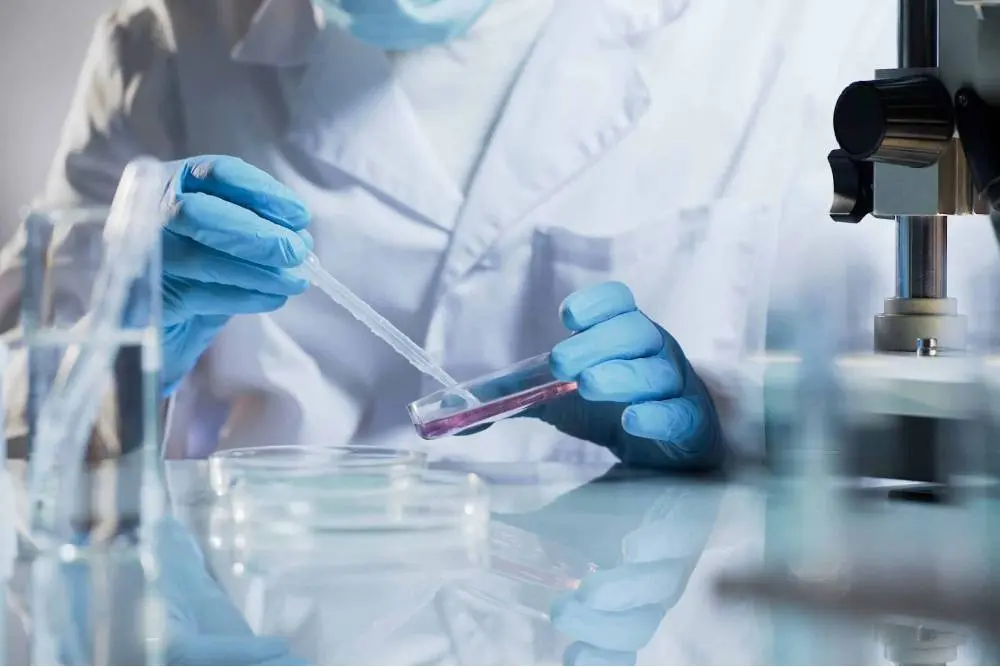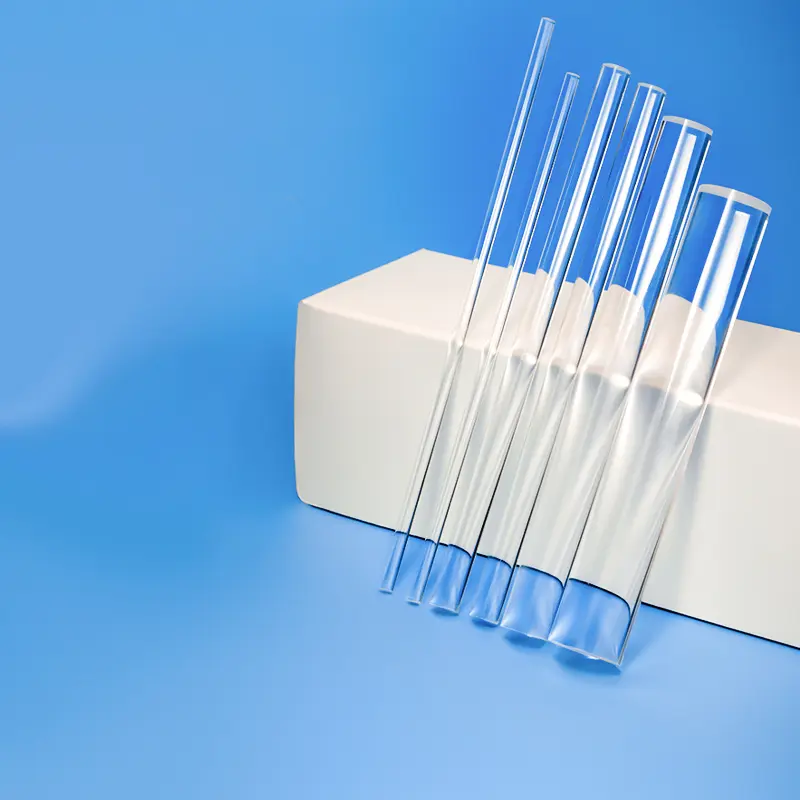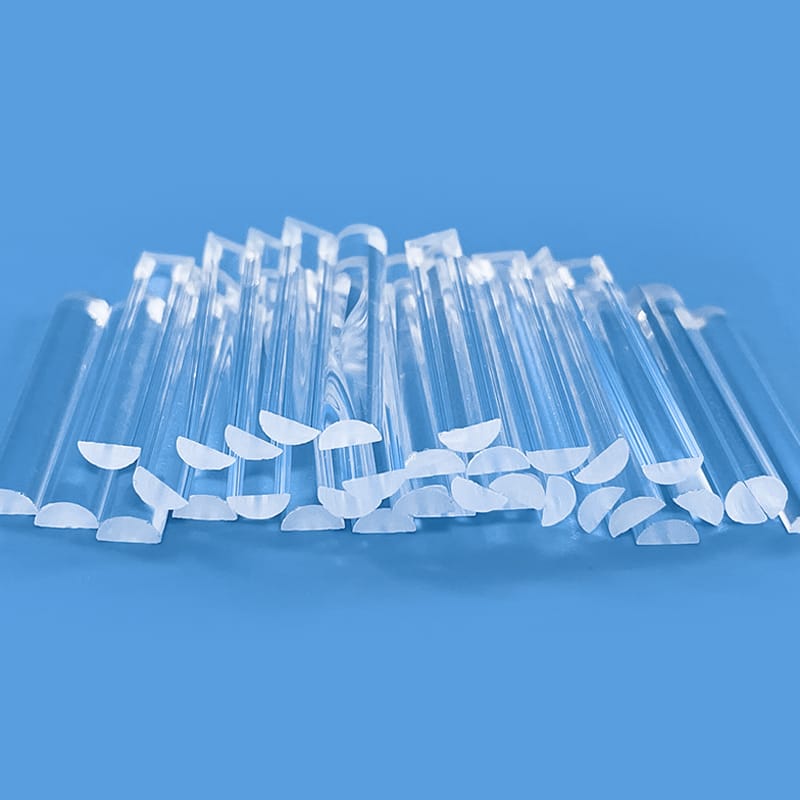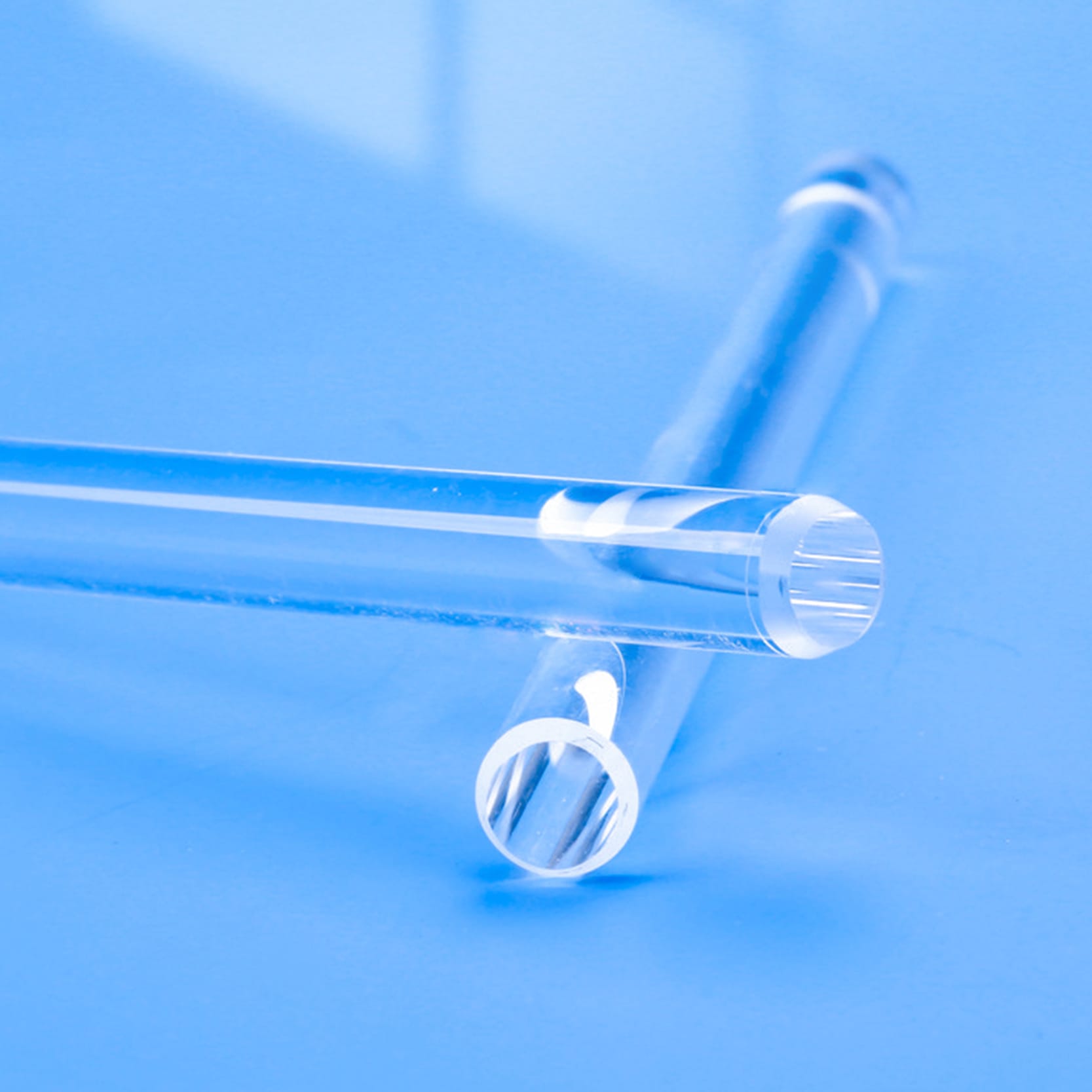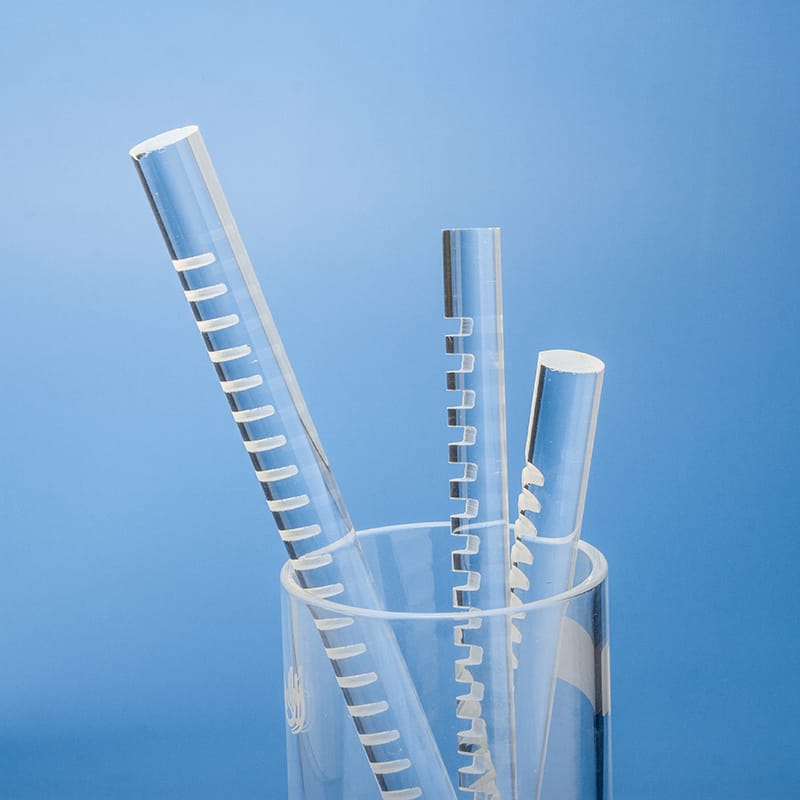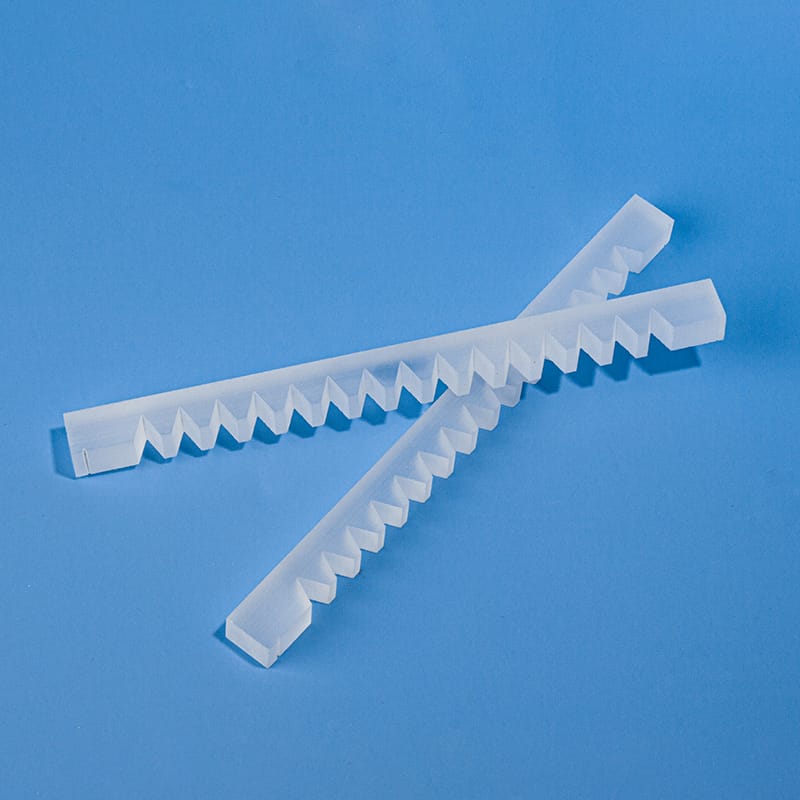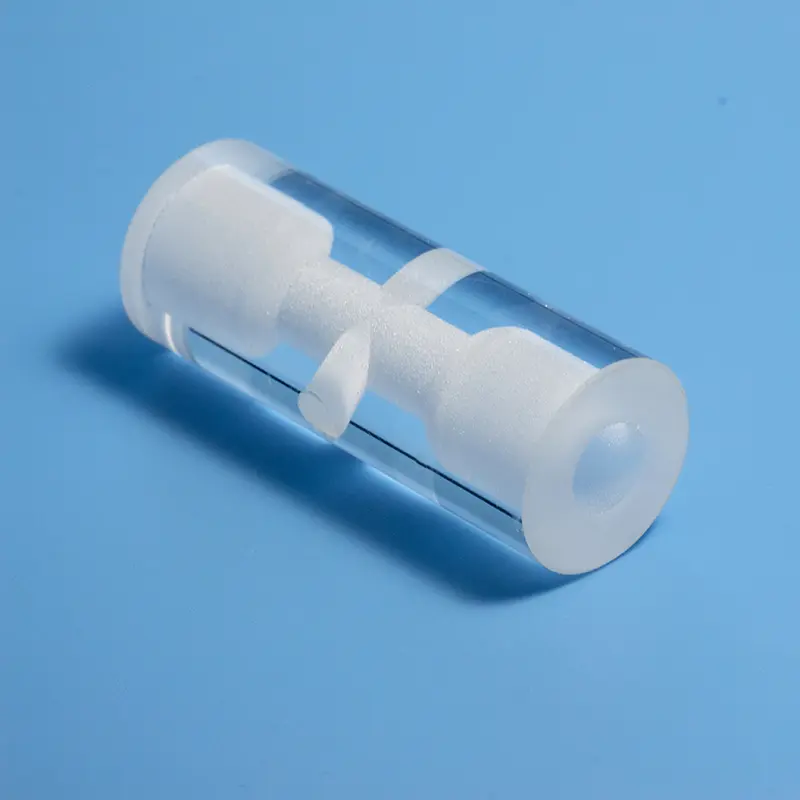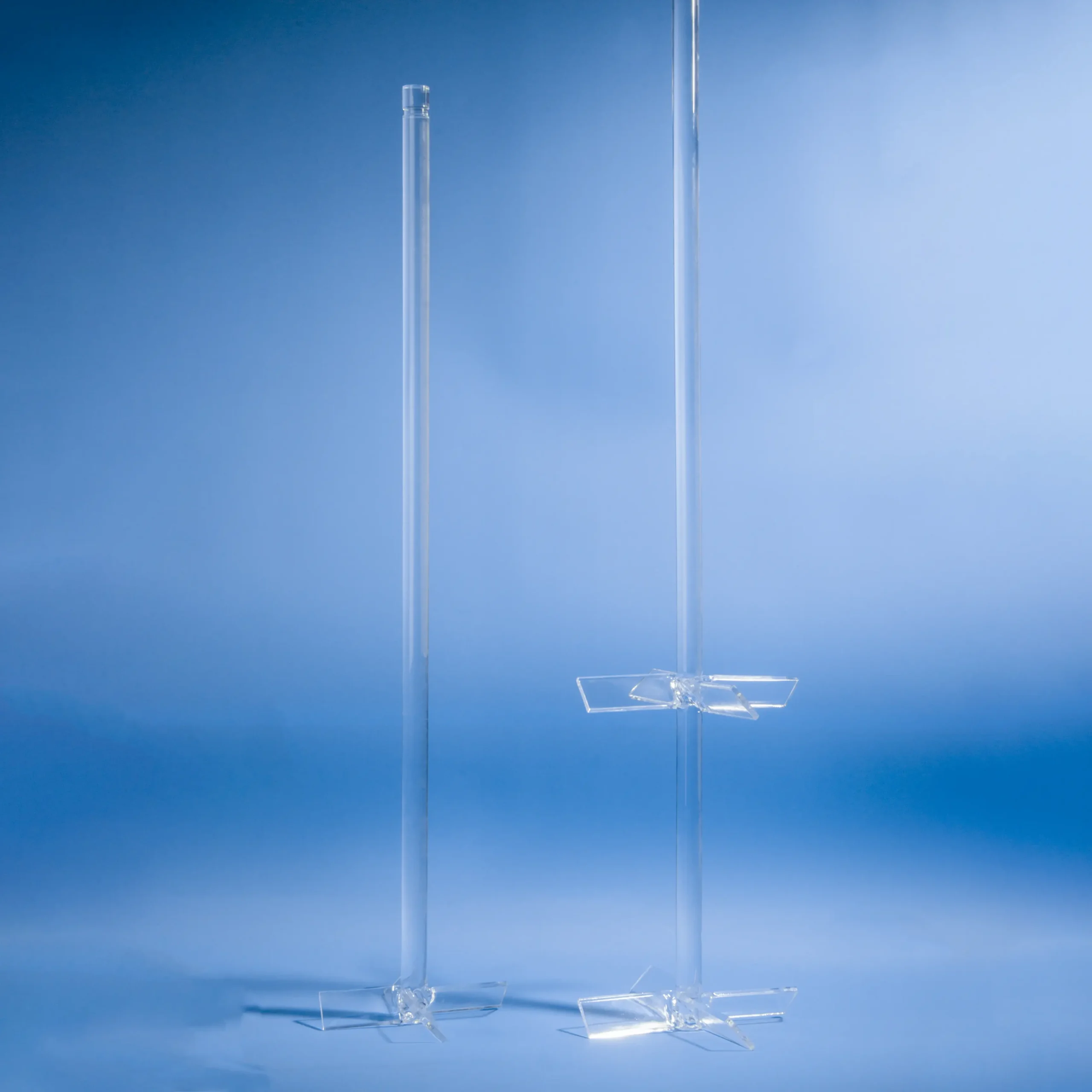A quartz stirring rod is a common laboratory instrument primarily used for stirring liquids to accelerate the dissolution of solutes and promote miscibility.
| diameter | length |
|---|---|
| 10mm | 300mm |
| 10mm | 600mm |
| 12mm | 300mm |
| 12mm | 600mm |
| 14mm | 300mm |
| 14mm | 600mm |
| 15mm | 300mm |
| 15mm | 600mm |
| 15mm | 1000mm |
| 16mm | 300mm |
| 16mm | 600mm |
| 16mm | 1000mm |
| 16mm | 1200mm |
| 18mm | 300mm |
| 18mm | 600mm |
| 18mm | 1000mm |
| 18mm | 1200mm |
| 20mm | 300mm |
| 20mm | 600mm |
| 20mm | 1000mm |
| 20mm | 1200mm |
| 22mm | 300mm |
| 22mm | 600mm |
| 22mm | 1000mm |
| 22mm | 1200mm |
| 25mm | 300mm |
| 25mm | 600mm |
| 25mm | 1000mm |
| 25mm | 1200mm |
| 28mm | 300mm |
| 28mm | 600mm |
| 28mm | 1000mm |
| 28mm | 1200mm |
| 30mm | 300mm |
| 30mm | 600mm |
| 30mm | 1000mm |
| 30mm | 1200mm |
| 32mm | 300mm |
| 32mm | 600mm |
| 32mm | 1000mm |
| 32mm | 1200mm |
| 35mm | 300mm |
| 35mm | 600mm |
| 35mm | 1000mm |
| 35mm | 1200mm |
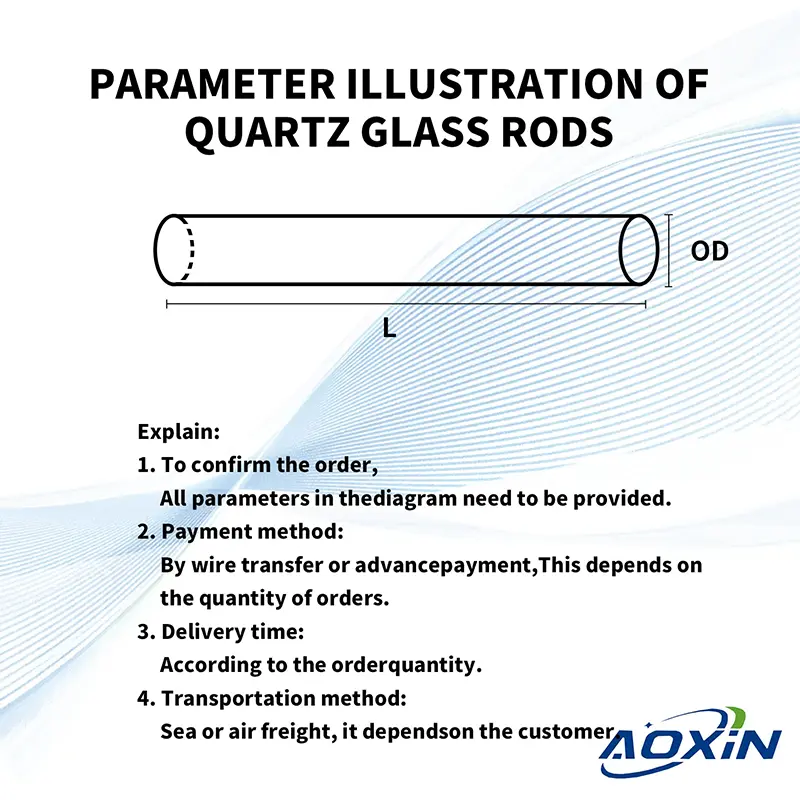
- Payment method:
By T/T or prepayment,
It depends on the quantity of the order. - Delivery time:
According to the order quantity. - Shipping method:
By sea or by air,
It depends on the customer.
Remarks:
To confirm the order,
the following parameters are required:
① outer diameter ② length ③ quantity
| Содержание недвижимости | Стоимость недвижимости |
|---|---|
| SiO2 | 99.99% |
| Плотность | 2,2×10³ кг/см³ |
| Твердость | 5,5 - 6,5 Шкала Мооса 570 KHN 100 |
| Прочность на разрыв | 4,8×10⁷ Па (Н/мм2) (7000 фунтов на кв. дюйм) |
| Прочность на сжатие | >1,1×10⁹ Па (160 000 фунтов на кв. дюйм) |
| Коэффициент теплового расширения | 5,5×10-⁷ см/см°C (20°C-320°C) |
| Теплопроводность | 1,4 Вт/м-°C |
| Удельная теплота | 670 Дж/кг-°C |
| Точка размягчения | 1730 °C (3146 °F) |
| Точка отжига | 1210 °C (2210 °F) |
| Точка деформации | 1120 °C (2048 °F) |
| Рабочая температура | 1200°C (2192°F) |
| Электрическое сопротивление | 7×10⁷ Ом см (350°C) |
| Размер | На заказ |
| Логотип | Подгонянный логос принимает |
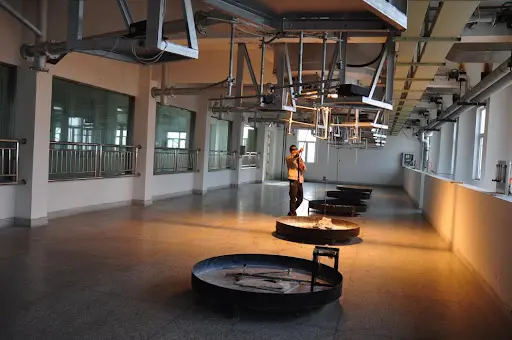
There are two primary methods for producing quartz rods: the continuous method and the flame fusion method (also known as the gas fusion method).
Continuous Method: In this method, quartz sand is fed from the top into a furnace, which comprises a metallic quartz crucible surrounded by electric heating elements. The quartz sand melts at high temperatures. The molten material then passes through a shaping orifice at the bottom of the crucible, producing rods, tubes, sheets, or other various specified product forms.
Flame Fusion Method: This method involves using hydrogen and oxygen to melt colorless quartz crystal. The molten material is formed into quartz glass through the melting and congealing of crystalline particles in the flame. The quartz glass is then removed from the flame through different methods and processed into quartz rods of the desired shape.
High Heat Resistance
Quartz material exhibits outstanding heat resistance, allowing for use in various temperature environments, including high-temperature cooking or experimental conditions.
Hardness and Durability
The hardness of quartz makes it resistant to wear and tear, effectively protecting the original shape and texture of ingredients while prolonging the service life of the stirring rod.
Good Light Transmission
Quartz stirring rods typically have good light transmission, making it easier to observe ingredient changes during the stirring process.
Diverse Designs
The structure of a quartz stirring rod generally includes the rod body, head, and connecting rod. Heads are designed in various shapes, such as disks or cones, to meet different stirring needs. Connecting rods are typically equipped with adjustment knobs for easy adjustment of the stirring rod length.
Сценарий применения
Chemical Experiments
In chemical experiments, quartz stirring rods are commonly used for stirring solutions and mixing reagents to ensure uniformity and accuracy throughout the experimental process. Their high-temperature resistance and corrosion resistance make them particularly suitable for experiments requiring high temperatures or strong corrosive reagents.
Quartz stirring rods offer several advantages over plastic stirring rods, including higher temperature resistance, greater chemical stability, superior structural strength, reduced risk of breakage, and a longer service life.
Quartz stirring rods are suitable for the following experimental environments:
1. High-Temperature Environments: Quartz stirring rods can be used for extended periods at temperatures up to 1100°C, with short-term use at temperatures up to 1730°C, making them ideal for high-temperature heating experiments.
2. Chemically Demanding Environments: Quartz stirring rods exhibit excellent chemical stability, with almost no reactivity with acids or bases, except for hydrofluoric acid and hot phosphoric acid. This makes them suitable for use in corrosive heating applications.
Quartz stirring rods demonstrate excellent stability in high-temperature experiments and do not deform easily. Quartz glass has a low thermal expansion coefficient, enabling it to withstand rapid temperature changes without shattering. Even when quartz glass is heated to around 1100°C and then placed in room-temperature water, it will not crack. Furthermore, quartz stirring rods possess strong heat resistance, with a short-term use temperature of up to 1300°C and a long-term use temperature of 1100°C.
Часто задаваемые вопросы
Кварцевое стекло - это твердый и хрупкий материал с отличными физическими и химическими свойствами, чрезвычайно высокой механической твердостью, хорошей электроизоляцией, высокой температурой и коррозионной стойкостью, низкой и стабильной задержкой, хорошим светопропусканием и т.д. Он широко используется в полупроводниках, оптике, электричестве, химии, аэрокосмической промышленности, автомобилестроении и других областях. Твердые и хрупкие материалы трудно поддаются обработке, поэтому во многих областях срочно требуются процессы резки с небольшим разрушением кромок, меньшими потерями материала, низкой шероховатостью поперечного сечения и широким диапазоном толщины реза. Традиционным методом резки кварцевого стекла является механическая резка, то есть резка кругом. К нетрадиционным методам резки относятся водоструйная резка, резка проволокой электрохимического разряда, непрерывная лазерная резка и т. д. Механическая резка имеет низкую стоимость, но контакт между кругом и материалом приводит к большому износу инструмента, а материал легко загрязняется инструментом. Кварцевое стекло подвержено разрушению кромок, микротрещинам и остаточному напряжению, что влияет на прочность и эксплуатационные характеристики материала! Трудно добиться криволинейной резки и требуется последующая обработка, такая как шлифовка и полировка. Лазерная резка не контактирует непосредственно с материалом, не имеет контактного напряжения и может выполнять сложную криволинейную резку. Пикосекундный лазер обладает такими преимуществами, как малый диаметр пятна, высокая точность, короткое время воздействия на материал и малая площадь воздействия, и подходит для обработки твердых и хрупких материалов.
。




